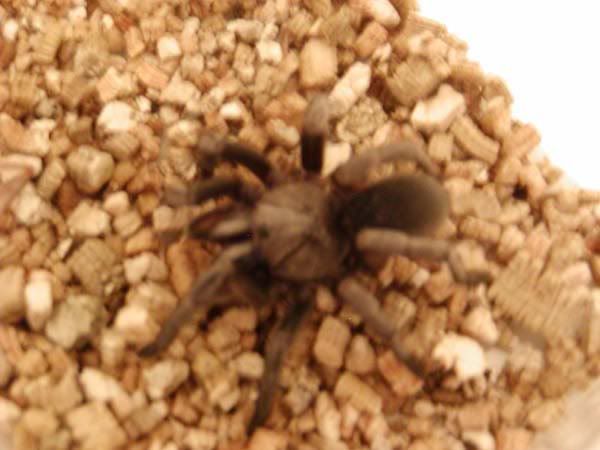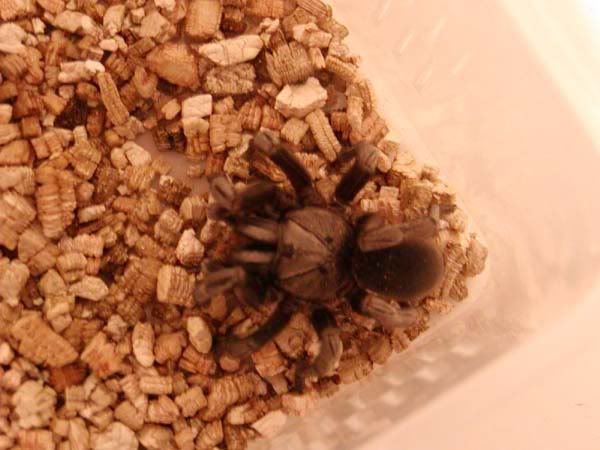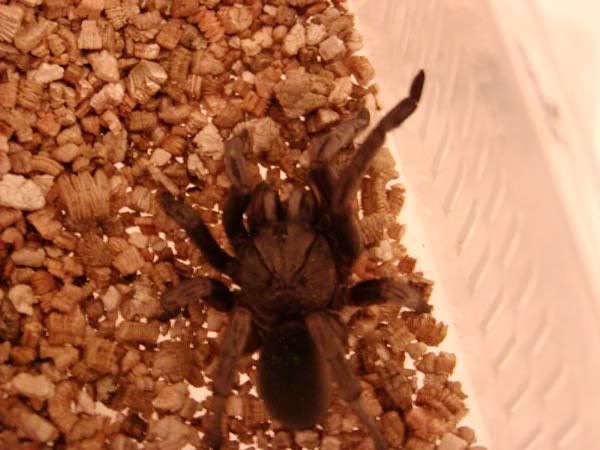SMOKEY GREY DWARF
Another wonderful common name made up by someone with a vivid imagination. !!!!!
I got 2 of these from my friends shop today and the only name the wholesaler had given him was smokey grey dwarf.
It is very skinny at the moment which makes me think that its WC as importers/wholesalers rarely waste money on food for spiders.
I would think that the two tone pedipalps might be a give away as well as the well defined cervical groove.
Anyone have any idea on the species or even family ?
Thanks Peter
Ps...I know its hard to ID a spider from a photo but give it your best shot
pps ... And yes it was moved off the vermiculite after pics were taken.
First picture is out of focus but shows the colour best




Another wonderful common name made up by someone with a vivid imagination. !!!!!
I got 2 of these from my friends shop today and the only name the wholesaler had given him was smokey grey dwarf.
It is very skinny at the moment which makes me think that its WC as importers/wholesalers rarely waste money on food for spiders.
I would think that the two tone pedipalps might be a give away as well as the well defined cervical groove.
Anyone have any idea on the species or even family ?
Thanks Peter
Ps...I know its hard to ID a spider from a photo but give it your best shot
pps ... And yes it was moved off the vermiculite after pics were taken.
First picture is out of focus but shows the colour best









Comment